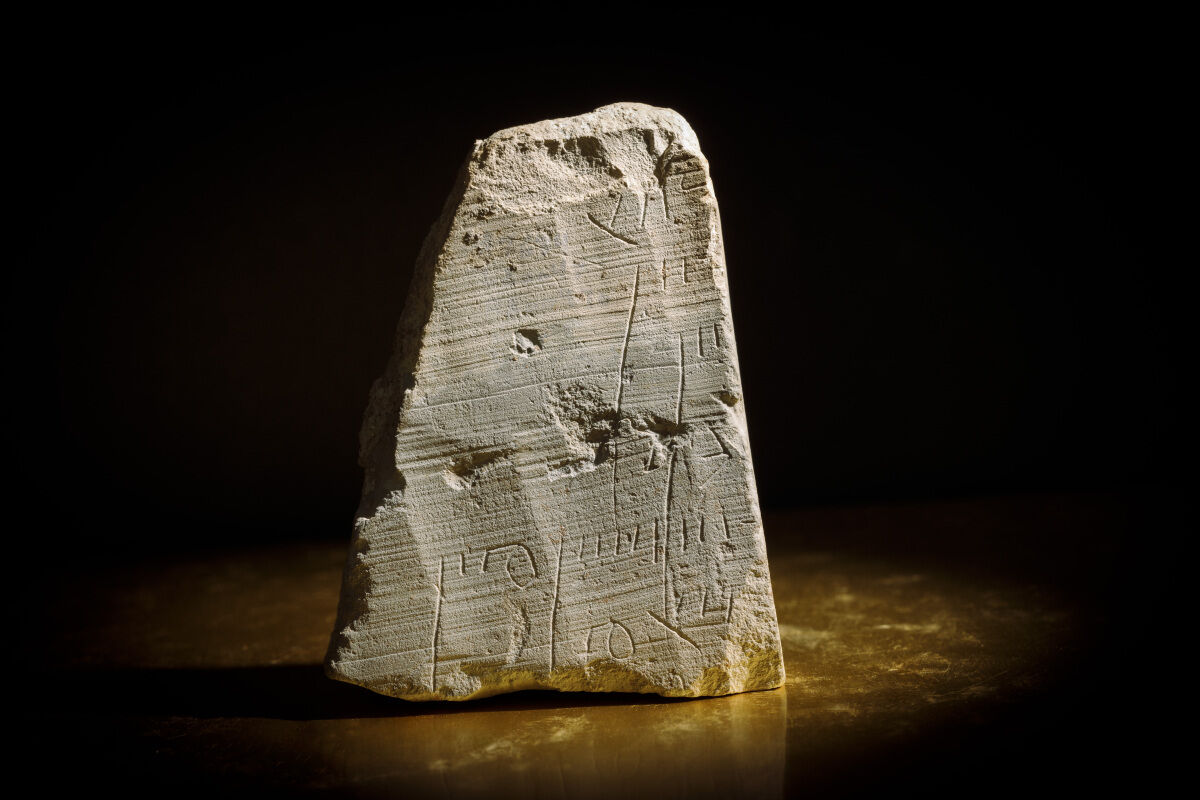A 2,000-Year-Old ‘Receipt’ Discovered in the City of David
A 2000-year-old inscription carved into a fragment of a stone tablet was discovered by the Israel Antiquities Authority (iaa) during recent excavations on the Pilgrimage Road at the City of David.
Although four other Hebrew inscriptions of this type have been found, this is the first within the boundaries of Jerusalem to date within the Second Temple Period. The seven partially preserved lines of text include fragmentary Hebrew names, such as Shimon, alongside letters and numbers. They were carved using a sharp tool onto a chalkstone slab that served as a sort of “receipt.”
The find was recently published in the archaeological journal Atiqot by Nahshon Szanton, excavation director on behalf of the iaa, with epigraphist Prof. Esther Eshel of Bar Ilan University. The broken stone slab had originally constituted part of an “ossuary,” a type of burial chest which was common in Jerusalem and Judea during the Early Roman period. It was retrieved out of its original context from a tunnel originally excavated in the 19th century, but the type of script, the stone slab and the similarity to contemporary inscriptions allow archaeologists to date this find to the Second Temple Period.

The area of discovery served as the main thoroughfare for Jerusalem at the time, so this inscription, along with other finds such as stone weights, adds to the evidence of the vast commercial activity of the day.

“The everyday life of the inhabitants of Jerusalem who resided here 2,000 years ago is expressed in this simple object. At first glance, the list of names and numbers may not seem exciting, but to think that, just like today, receipts were also used in the past for commercial purposes, and that such a receipt has reached us, is a rare and gratifying find that allows a glimpse into everyday life in the holy city of Jerusalem,” the researchers said in the press release.
Eli Eskosido, director of the Israel Antiquities Authority, had this to say about the discovery: “The Pilgrimage Road, which is continually being uncovered in the City of David National Park in Jerusalem, is a flagship project of the Israel Antiquities Authority. It is not a coincidence that the many discoveries which are being revealed in the excavation shed light on the centrality of this road even during the Second Temple Period. With every discovery, our understanding of the area deepens, revealing this street’s pivotal role in the daily lives of Jerusalem’s inhabitants 2,000 years ago.”